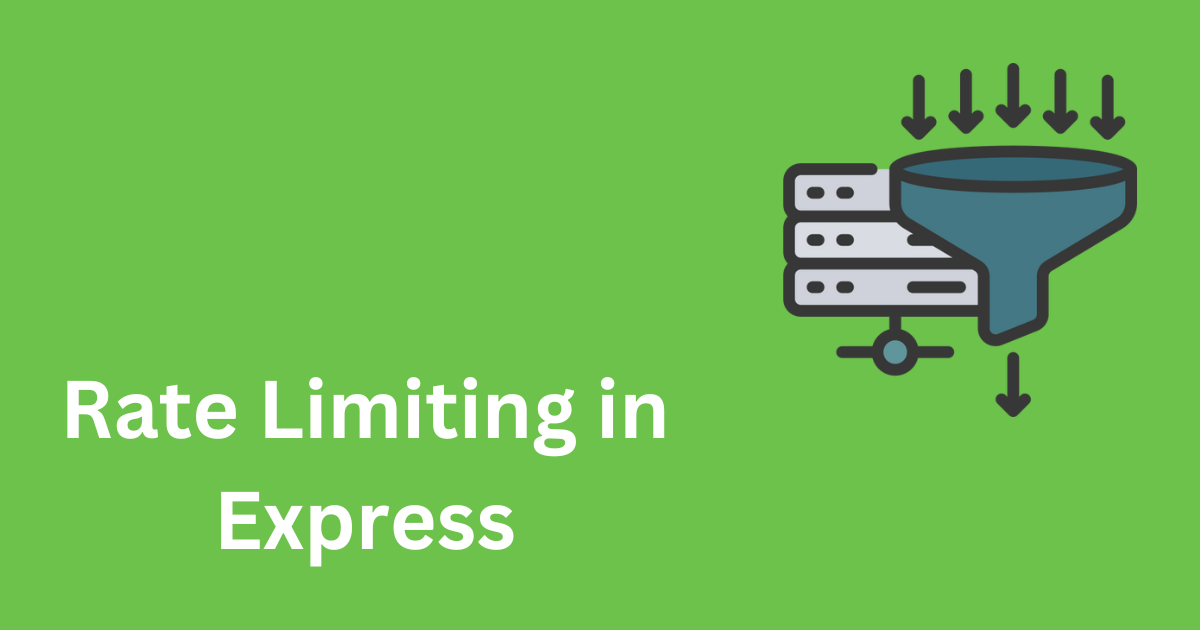Rate limiting is an essential technique used in web development to restrict the number of requests a client can make to a server within a given timeframe. It helps protect the server from abuse, prevents brute-force attacks, and ensures fair usage of resources. In this tutorial, we will explore how to implement rate limiting in Express, a popular web framework for Node.js.
Understanding Rate Limiting
Rate limiting involves setting up certain rules and restrictions on the number of requests a client can make within a specified time window. When the limit is exceeded, the server can respond with an error or delay the requests to ensure the system’s stability and availability.
Express Rate Limiter Middleware
To implement rate limiting in Express, we can utilize a middleware package called express-rate-limit. This package provides a flexible and configurable way to set up rate limiting rules in our application.
Installation
Before we begin, make sure you have Node.js and npm (Node Package Manager) installed on your system. To install the express-rate-limit package, open your terminal or command prompt and run the following command:
1
npm install express-rate-limit
Usage
Once the package is installed, we can set up rate limiting in our Express application by following these steps:
Import the required modules and create an instance of the rate limiter middleware:
1 2 3 4 5 6 7 8 9 10
const express = require("express"); const rateLimit = require("express-rate-limit"); const app = express(); const limiter = rateLimit({ windowMs: 15 * 60 * 1000, // 15 minutes max: 100, // maximum requests per window message: "Too many requests from this IP, please try again later.", });
Apply the rate limiter middleware to the desired routes:
1
app.use("/api/", limiter);
In this example, the rate limiter middleware is applied to all routes starting with
/api/. Adjust the route path as per your application’s requirements.Start the Express server:
1 2 3
app.listen(3000, () => { console.log("Server started on port 3000"); });
Explanation
In the above code, we imported the necessary modules: express and express-rate-limit. We created an instance of the rate limiter middleware using the rateLimit() function, passing an object with configuration options.
The windowMs option specifies the time window in milliseconds. In this example, we set it to 15 minutes (15 _ 60 _ 1000 milliseconds).
The max option defines the maximum number of requests allowed per window. Here, we set it to 100 requests.
The message option provides a custom error message to be sent when the request limit is exceeded.
Finally, we applied the rate limiter middleware to the desired routes using app.use(). In this case, we applied it to all routes starting with /api/.
Example
Let’s consider an example where we have an API endpoint /api/books that retrieves a list of books. We want to limit the number of requests to 5 per minute from each client.
1
2
3
4
5
6
7
8
9
const limiter = rate;
Limit({
windowMs: 60 * 1000, // 1 minute
max: 5, // maximum requests per window
message: "Too many requests from this IP, please try again later.",
});
app.use("/api/books", limiter);
In the above example, if a client exceeds the limit of 5 requests within a minute for the /api/books endpoint, they will receive the custom error message specified in the message option.
Conclusion
In this tutorial, we learned how to implement rate limiting in Express using the express-rate-limit middleware. Rate limiting is an effective way to control the number of requests made to your server, preventing abuse and ensuring fair resource allocation. By applying rate limiting rules, you can enhance the security and stability of your applications.
Remember to adjust the rate limit settings according to your specific requirements, considering factors like the nature of your application, expected traffic, and API usage policies.
Now, you have the knowledge and tools to incorporate rate limiting into your Express applications. Go ahead and implement it to safeguard your APIs and provide a better user experience!
Happy coding!
